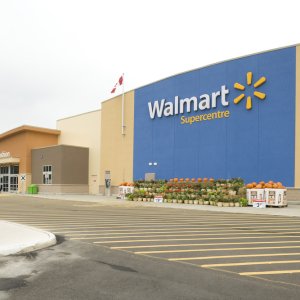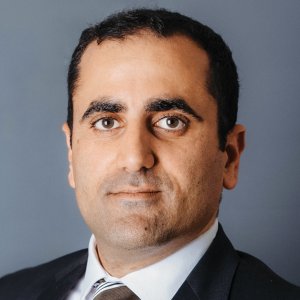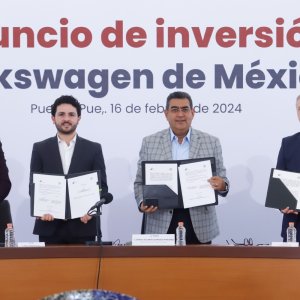A Self-Inflicted Water Shortage

STORY INLINE POST
Water is the most precious resource on Earth. It is the key ingredient for everything, whether it is to grow, manufacture, consume, clean, or anything else. Nothing can be done without water. Despite 71 percent of the Earth being covered by water, only 3 percent is freshwater, which can be used for the aforementioned uses. Various technological advancements have been made to utilize the remaining 97 percent of seawater.
Israel, among other nations, has developed state-of-the-art desalination technologies, which can transform seawater into drinking water. Our focus in this article will, however, remain on the 3 percent of freshwater that we have on the planet. We will further narrow our investigation beyond wastewater, greywater, or any other untreated water. We will focus on drinking water going to waste through leaks, bursts, or any other impaired infrastructure resulting in loss of water, also known as non-revenue water (NRW).
NRW is the percentage of water on which municipalities do not generate revenue. Thus, it can be described as water lost through leaks in infrastructure and broken and burst pipes, resulting from negligence in the maintenance of infrastructure, sabotage of infrastructure, and natural disasters, among other causes. Nevertheless, a lack of maintenance is the main cause.
Repercussions of Infrastructure Negligence
When considering the repercussions of burst pipes or leaks, it is important to differentiate between heterogeneous countries. When considering the UK, utilities get very large penalties per liter of water that goes to waste through bursts or leaks. One utility accumulated £32 million in fines over the course of four years for leaks, bursts, and other sewage pollution-related reasons.
Another approach to the costs of non-revenue water is to pass the cost onto the consumer or the end user of the water. Thus, consumers see the price of water as higher than the actual cost of water due to the NRW cost, which is incorporated into the total price that consumers pay.
Further, it is essential to note that nothing happens in isolation. Every drop of water that goes to waste, reaches the leak or burst pipe through energy-intensive pumps transporting the water over long distances. Thus, if your NRW figure is up to 40 percent, it means that the utility’s electricity bill is also 40 percent higher than it should be in the absence of leaks. Further, taxes are also levied on the NRW, increasing the cost of the water.
Therefore, a reduction in the levels of NRW will vastly decrease the cost of water, due to the water and electrical cost encapsulated in the cost of the water. We started this article by emphasizing the importance and the multi-disciplinary application of water, which entails a reduction in the cost of water that will lead to an increase in the standard of living. Considering the marginal cost of NRW, we will examine the current empirical global and regional cost of NRW.
A Global View on NRW
The global volume of NRW has been estimated to be 346 million cubic meters per day or 126 billion cubic meters per year. Conservatively valued at only $0.31 per cubic meter, the cost/value of water lost amounts to US$39 billion per year (Liemberger & Wyatt:2019). This roughly equates to the annual Gross Domestic Product (GDP) of the South American country of Paraguay.
Based on these figures caused by the laxity of maintenance, it is visible that deteriorating water infrastructure is a problem; however, deteriorating infrastructure is not an exclusive phenomenon. Water leaks can be observed on all continents. NRW in North America totaled between 20 percent and 30 percent (Xylem: 2022). NRW in China, adds up to 20 percent, whereas Western Europe averages between 10 percent and 40 percent (AVK:2017).
We observe that NRW is not limited to one country or one continent. Next in our investigation, we scrutinize Africa. NRW in Sub-Saharan Africa (SSA) is around 14 million cubic meters per day. This totals an astonishing US$1.4 billion per year. As mentioned, nothing happens in isolation. SSA is already facing vast water limitations. One in 3 Africans face water scarcity; this is approximately 400 million people. Reducing the NRW in SSA can already make a substantial difference in the effort to achieve Sustainable Development Goal (SDG) 6: Clean water and sanitation.
NRW Is Not the Eschaton
Various countries have successfully turned around the situation. The city of Manilla, the capital of the Philippines, triumphantly reduced its NRW in the city from 63 percent to 11 percent in 16 years. Our second example focuses on the Middle Eastern nation of Israel. Situated in the middle of a desert, Israel is soon to obtain 90 percent of its water supply through seawater desalination. Further, 80 percent of wastewater produced by households is recycled. Thus, water is not wasted in Israel. This is further reflected in the total NRW, which was reduced by 75 percent in six years, from 8 percent to 2 percent.
In conclusion, let’s review the disruptive Israeli technologies that enabled this vast reduction in NRW:
Aquarius Spectrum – Aquarius Spectrum develops acoustic solutions that enable water utilities to perform proactive monitoring of their underground assets and detect background leaks in their initial stages of development and repair the leaks before they cause serious damage. Aquarius also assesses the real condition of the pipes. These solutions are based on sensitive fixed and mobile sensors with advanced correlating algorithms, which can be applied to all types of pipes.
TaKadu – TaKaDu’s new predictive maintenance solution facilitates greater efficiency across the network, identifying areas that are not performing as well, and recommending ways to bring them up to standard. By using data from better-performing areas, TaKaDu can assist you in prioritizing leak detection surveys and detect faulty assets before they emerge as events in the TaKaDu system.
Utilis – Using algorithms that have been fine-tuned with the power of AI and machine learning to recognize the signatures of water leaking from different systems, Utilis provides likely leak locations as a subscription. Compared to current leak detection services and methods, satellite-based leak detection technology not only identifies more leaks, it increases field crew efficiency by up to 400 percent.























